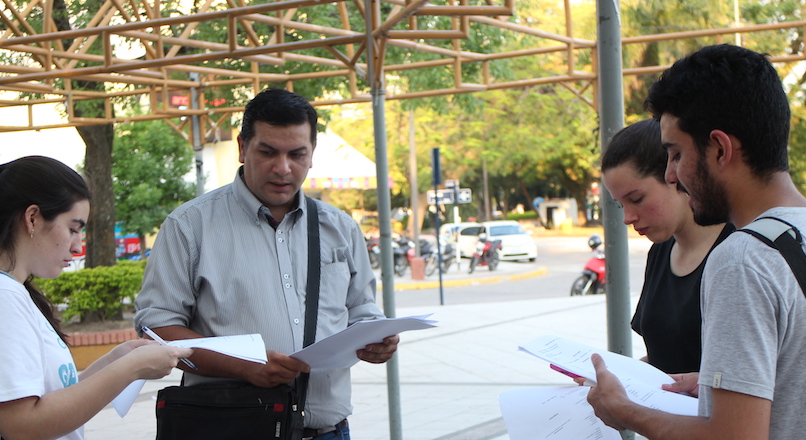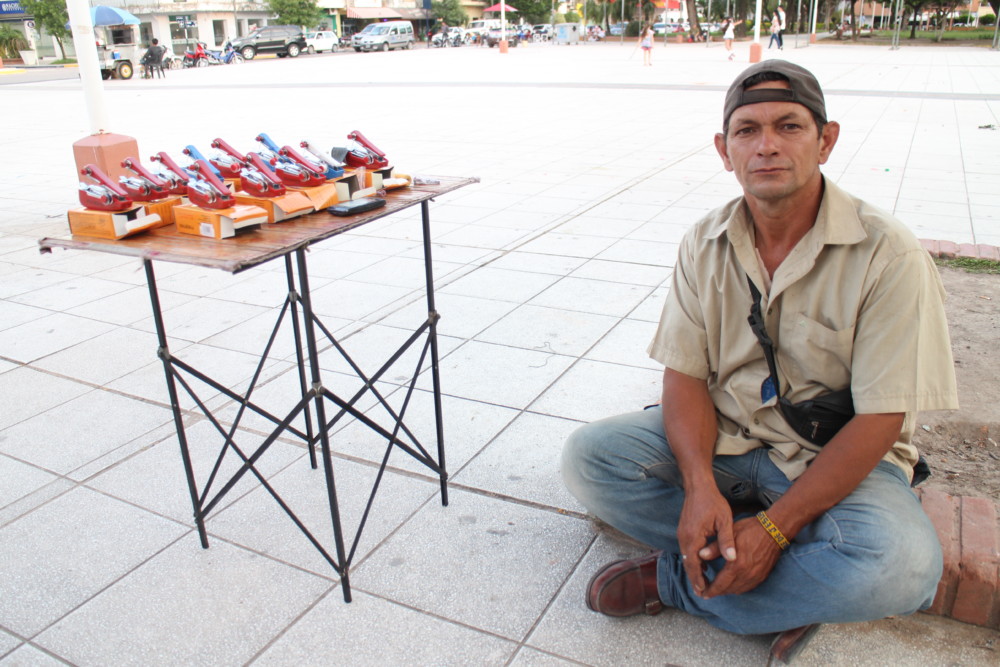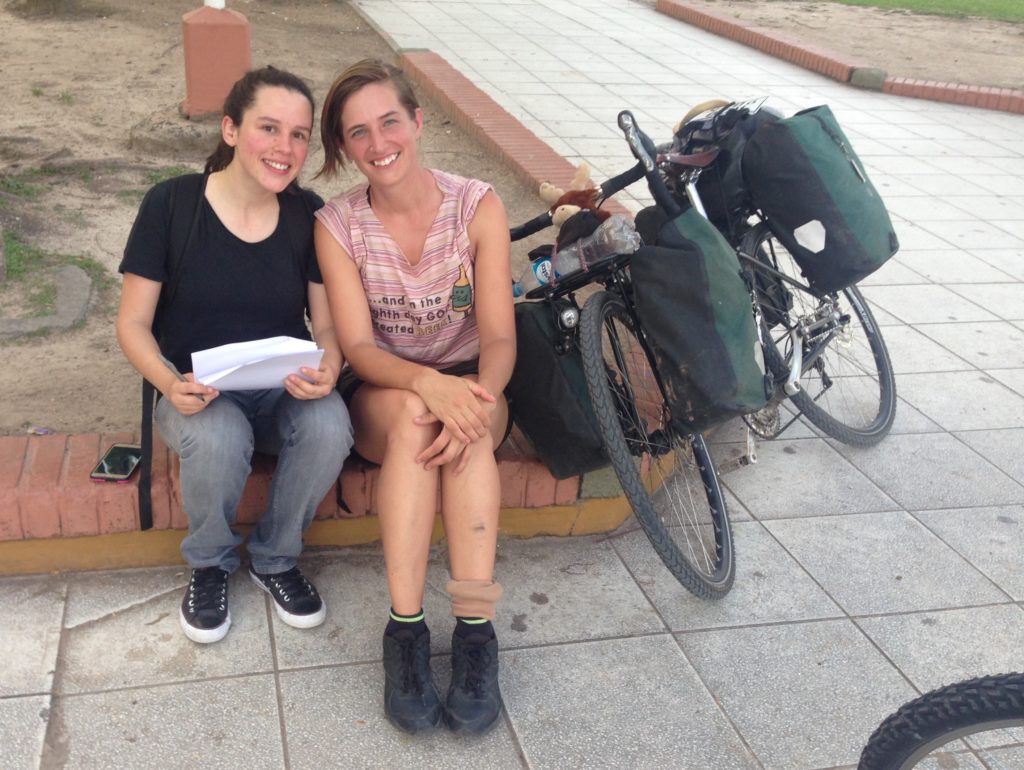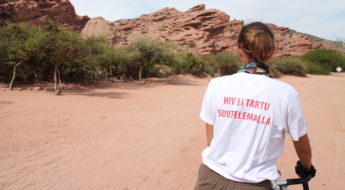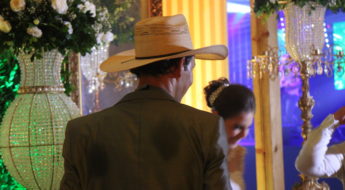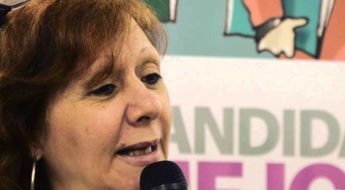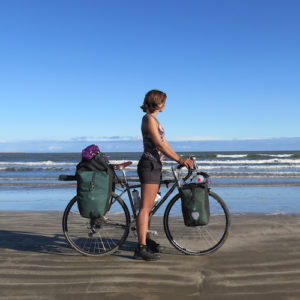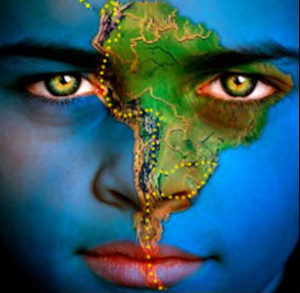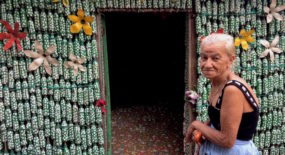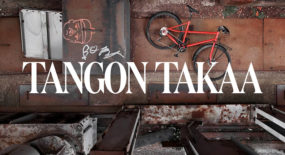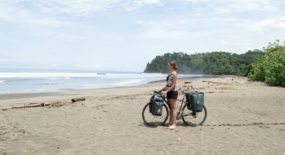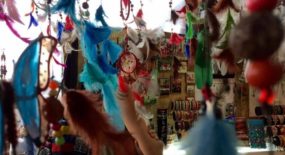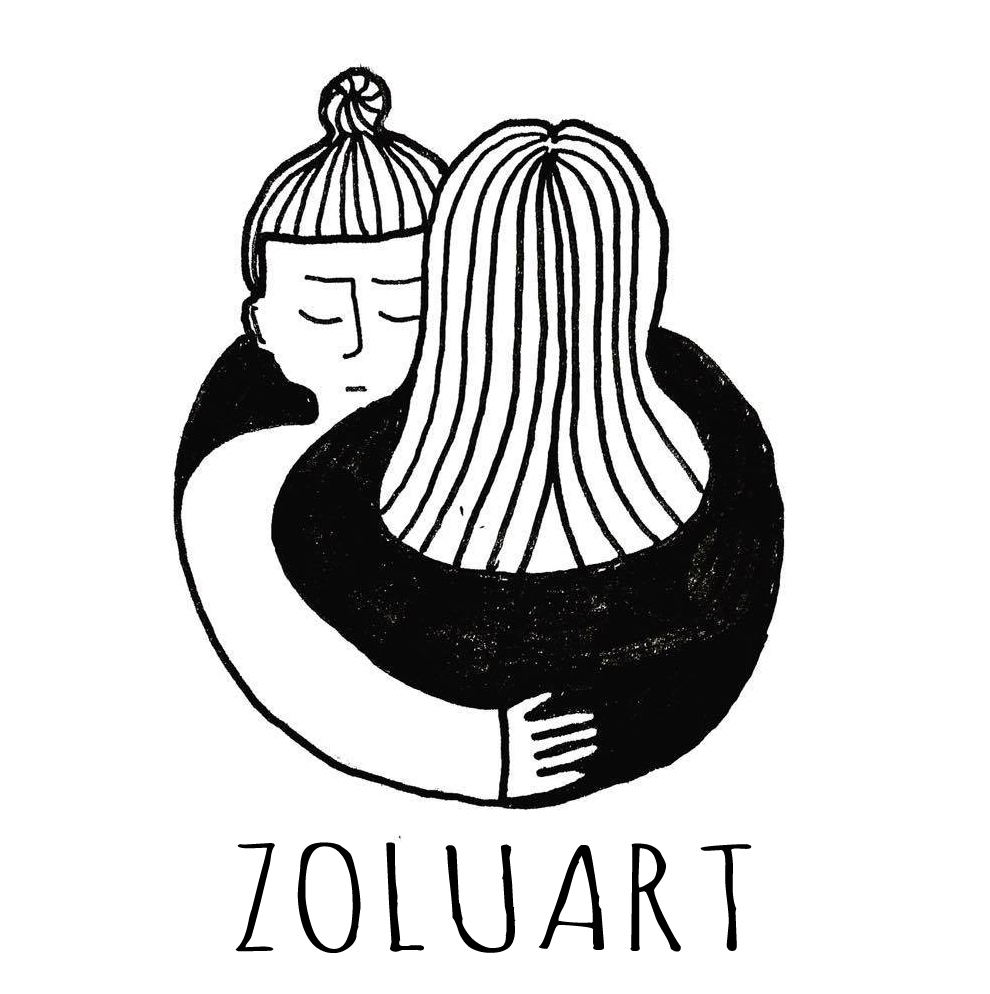META-ANTHROPOLOGY IN FORMOSA: LOCALS OBSERVING LOCALS
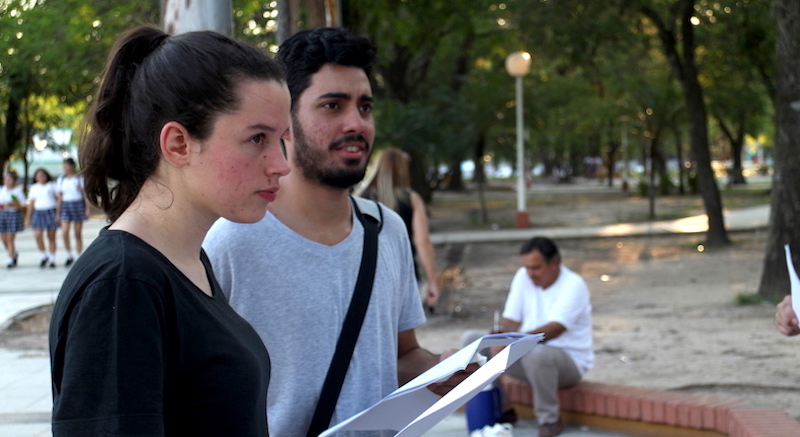
I find anthropology fascinating. To study of human life in different societies is one of the things I most love to do. So, imagine my double-layered enthusiasm when taken to an introductory class of anthropology and social systems in a culture, which already in itself is somewhat new to me. In other words, getting the opportunity to observe people observing people. Yep, that’s what I’ve done in Formosa, Northern Argentina, receiving quite an overview on the population of this region. And all this due to a cyclist and freshman of social communication at the Instituto Santa Isabel: Aylen.
Formosa in a nutshell
Formosa is the capital of the province of Formosa. The province is located in the Northeastern part of Argentina, bordering Paraguay for around 1000 kms. It’s part of the Gran Chaco region. Its population is around 550,000 and its native inhabitants include the Pilágas, Wichis and Tobas, whose languages are still spoken in the province. The population of Formosa city is around 234,000.
Meta-anthropology
In Formosa, I attended a class on anthropology and social systems. It was part of a course where the students were introduced to the discipline and methods of anthropology. This time, the class was held at the Plaza San Martin (the central park and square), where the students were to conduct interviews with the people in the park.
Although even the survey in itself was interesting, what I enjoyed even more was watching, how it was carried out. What did the students have to ask? Whom? How? Why? What kind of instructions did the teacher give for the survey? What were the conclusions drawn by the students? And so forth. So, before I tell to you about the actual interviews, here’s my meta field study on the field study. Some of the observations are quite obvious, but some less.
Time is flexible
The students were supposed to meet up at 6PM. Yet, at 5.55PM me and Aylen (who took me to the class) were still on the porch of her home, calmly drinking tereré. Once we finally hopped on our bicycles and reached the main square of the city around 6.15PM, four of the other six students were already there. The professor, however, was nowhere in sight. So, after waiting for 10 minutes more, Aylen wrote him a message on whatsapp to ask if he was coming (this is the first time in history that I use this abbreviation: LOL!). Ten minutes later, the professor strolled down the street to meet his students. (And 20 minutes later, the sixth student joined the rest of the group.)
Questions tell more than answers
Upon reaching the group, the professor handed out five question forms to each of the students. The group went through the questions one by one and the professor made sure everyone knew e.g. what a blended family is. To me, the questions told much more than their answers ever could. A question like: “do you believe in witchcraft?” immediately implies that witchcraft is common in this area. If it wasn’t, this question simply wouldn’t exist. And as I had no clue it existed in this area, I probably never would have come up with this question in the first place.
In addition to this, the options in the multiple choices told which answers were most expected. When speaking about religion, options like catholic, evangelic or adventist, tell that these are the most common religions (or officially recognized) around.
A stroll around the park
After reading through the questions, the group was sent off to do the interviews. The Plaza San Martin was the perfect place to conduct such a field study. People gather there to sit, to drink tereré, to mingle. And the interesting this is that it’s people from all economic levels of society and all ethnicities.
Me and Aylen walked around the park and easily found people to interview. Only one, a police officer which I chose as an interviewee (and which Aylen said are known to be mala onda), refused to answer the questions. His explanation was that it was the peak hour for crime (7PM). As he didn’t collaborate, I went for a man selling chipas (typical bread from the region, prepared with manioc flour and cheese). The man happily answered, posed for a picture and even gave us two chipas as a present. All the rest of the interviewees were chosen by Aylen.
The moment of the interviews
Each time with a new person, Aylen introduced herself and explained the aim of the interview. The sentence that caught my attention was: “were doing a survey for a subject called anthropology, which is…”. Without this sentence, I doubt any of the interviewees would have known what anthropology is. Also, some of the questions weren’t understood without us explaining them. E.g., none of the interviewees knew what superstitions were without giving examples (of a black cat crossing the road or walking beneath a ladder).
We only interviewed men, which was a mere coincidence. On one of the park benches there was a couple, but the girl didn’t want to answer the questions, so we interviewed the boy. The only woman to answer Aylen’s questions was myself. As the professor heard I’m a foreigner, her immediately designated me as one of the interviewees.
One notable fact about the interviews was that given the answer “other”, we weren’t supposed to ask further questions. Therefore, it was definitely more a quantitative than a qualitative study. Also, not on all occasions all of the multiple choice options were read out loud to them, because the answers could probably be guessed according to cultural norms and customs (not exactly the optimal way of conducting an anthropological study, but very interesting for my meta-anthropological analysis!). As I was only assisting to the course, I couldn’t start asking the interviewees for more information…
Meta-anthropology: common conclusions
The analysis of the results was done orally, as a group. The students drank Sprite and the teacher smoked cigarettes (I’m not sure this would be allowed in Northern Europe) while everyone contributed to the conversation. The observations remained mainly visual, yet some conclusions were also drawn about religions and family types. All in all, the study was a scratch in the surface for the local students, but to me the aspect of meta-antropology brought the whole thing to a completely new level.
Q&A from locals to locals
Below are the questions and my comments on them. For the answers, please scroll down.
1. Type of family
Options: Nuclear/Single-parent/Blended family/Homosexual parents/Other
Surprisingly few families in Paraguay and Northern Argentina are nuclear families. Most families are blended.
2. Descendence
Options: Paraguayan/Spanish/Italian/Indigenous/Other
Argentina is known for its Italian and Spanish influence. However, because Formosa lies very close to the Paraguayan border, there are also many formoseños of Paraguayan descent. In addition to this, the North of Argentina is also home to many indigenous peoples, such as the Guaraníes.
3. Languages known or spoken
Options: Guaraní/English/French/Local languages/Only Spanish/Other
There are around 20 local languages within the district of Formosa, such as: qomlaqtaq, wichi, pilagá and mocoví. Most people of indigenous descendence speak at least one native language and Spanish.
4. Gastronomy: which foods do you mostly eat?
Options: Meat/Vegetables/Beans/Fruit/Processed deserts
This is an area where meat makes up a big part of the local cuisine. Also processed deserts are common among formoseños.
5. Religion
Options: Catholic/Evangelic/Adventist/Other
As most of Argentina, Formosa is officially Catholic. I don’t know for sure yet, but by the amount of indigenous peoples in the area, I assume there are also many synchretic religions (fusions of differing religions).
Do you believe in witchcraft?
Do you believe in superstitions?
6. What do you do on your freetime?
Options: Walks/Cinema/Parties/Painting/Reading/Television/Games/Other
This one is quite self-explinatory.
7. Use of Mobile Phone: for how long can you cope without a mobile phone?
Options: 30mins/1hour/Over an hour/Over two hours/Can’t cope without a phone
Like in many other places nowadays, many formoseños have smartphones and communicate with each other via whatsapp.
8. Myths and Legends: do you know the following?
Options: Pombero/Karaí Octubre/Lobizón/Others
Pombe ro (or Pompéro): Pombero is a rather low anthropomorphic elf, a an ugly, dark man, with hairy hands and feet, and whose footsteps you cannot hear. He can become invisible when he wants, slide through the tightest spaces (such as keyholes), run on all fours, imitate the singing of birds (especially the nocturnal ones etc.He is said to capture, kiss and rape ungrateful children (mostly girls). This humanoid creature stems from the Guaraní mythology and like most legends in the region, also the legend of the Pompéro spans all throughout regions of Northern Argentina, Paraguay and Brazil.
Karaí Octubre: according to the Guaraníes, the Karaí (Mr.) Octubre is an evil elf which attracts poverty and famine. This elf punishes those who were unable to save up food during the winter (with a whip) and rewards those who have the pot full on October 1st. According to tradition, October is the month when food is scarce: cassava, corn and other plant products are more difficult to get hands on on the countryside. So, the Guaraníes receive October with a stew called Yopará to avert the Karai October. The legend is most alive in Paraguay, but the belief also exists in Corrientes, Formosa and parts of Chaco and Santa Fe.
Lobizón (or Luisón): the South American equivalent for the European warewolf. According to a superstition of European origin, the seventh son upon reaching adolescence becomes warewolf Tuesday and Friday nights of fullmoon. To fulfill this process he hides under somme disintegrated element, such as sand, ashes or the tomb of a cemetery. At dawn, the warewolf regains his human form. To become an animal, he must go through certain rituals, such as turning three times around own his body.
9. Do you participate in the festivities of Formosa?
Yes/No/Which ones?
The region of Formosa is full of festivities. The patron saint, Nuestra Señora del Carmen, is celebrated on July 16th, the Fiesta del Rio in November and the Día de la Fundación de Formosa in April. Only during the month of May, there are 11 different festivities within the province. As in most Latin American countries, some are Catholic celebrations, whilst others celebrate traditional local foods, legends etc.
Observe:
Biologic diversity: color of skin, eyes, physical structure, height, weight, visible habits.
#1
1. Other
2. Paraguayan, Italian
3. Guaraní, Spanish
4. Meat, Vegetables, Beans, Fruit, Pastries
5. Catholic – believes in witchcraft and supersticions
6. Walks
7. Over two hours
8. Knows other legends and myths
9. Yes
Aylen’s observations: half-blood, brown eyes, around 160cms
#2
1. Blended family
2. Other
3. English, Spanish
4. All of the options
5. Evangelic – believes in witchcraft and superstitions
6. Walks
7. Over two hours
8. Knows all the mentioned legends and myths
9. No
Aylen’s observations: white, green eyes, 160cms
#3
1. Blended family
2. Spanish, other
3. English, Spanish, Other
4. Everything
5. Catholic – believes in witchcraft and supersticions
6. All of the options
7. Over two hours
8. Knows all the mentioned legends and myths
9. Yes, the religious festivities
Aylen’s observations: white, brown eyes, robust, 150cms
#4
1. Blended family
2. Other
3. Guaraní, Spanish
4. Everything
5. Catholic – believes in witchcraft and supersticions
6. Television
7. Over two hours
8. Knows other legends and myths
9. Yes
My observations: around 60-years-old, darkish skin, native tongue Guaraní
This interview was conducted by me.
#5 (Me)
1. Blended family
2. Other (Finnish)
3. English (the other languages weren’t given as options)
4. Vegetables, beans, fruit (I’m vegetarian)
5. Other (I’m not sure if I believe in witchcraft, but the options didn’t leave space for doubt)
6. Cinema/Parties/Reading (climbing wasn’t an option)
7. Over two hours
8. Knows other legends and myths (and now also the ones mentioned!)
9. No (not yet, at least!)
Aylen’s observations: white, skinny, 170cm, 63kg.
How I met Aylen?
After crossing the border from Asuncion, Paraguay to Clorinda, Argentina, I couchsurfed with a lovely family in Clorinda. The father of the family, Migue, told me that there was a girl in Formosa (which is where I was heading next) who often hosted long-distance cyclists. However, as I thought I’d be couchsurfing again, I didn’t even ask Migue for the girl’s contacts. As no one from couchsurfing replied to me on such a short notice, I decided to ask on a whatsapp group of cicloviajeros (bikepackers) if anyone knew anyone in Formosa. The answer came in a nano second: “Aylen. She’s super cool and hosts cyclists”. So, I looked her up on Facebook and and wrote to her. Unfortunately, her own house was full at the moment, but she said she would try and find a place for me somewhere else. Only a couple of minutes later, she told me: “you have a place to stay”. Although I wasn’t to stay at her place, the first thing I did upon my arrival to Formosa after peddling for 120kms from Clorinda, was go and meet Aylen. Such a chilled person! Definitely to fall in love with. And when speaking to her, I realized she was the same person Migue had spoke about in Clorinda. We drank some tereré, she did an interview with me for the radio she works for and after that we left for the famous anthropology class.


